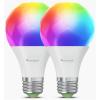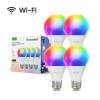If you’ve ever tried to set up a smart home device, only to find out it doesn’t work with your phone, your app, or your voice assistant, you’re not alone. Smart homes have exploded in popularity, but they’ve also been a fragmented mess. That’s where Matter comes in.
Matter is a new universal standard that aims to fix the mess, and it’s backed by the biggest tech players in the world. In this guide, we’ll explain what Matter actually is, how it works, and what it means for your smart home setup.
What Is Matter?
Matter is an open-source smart home standard designed to make devices work seamlessly together, regardless of brand or platform. Whether you’re using Apple Home, Google Home, Amazon Alexa, or Samsung SmartThings, Matter is meant to unify them all.
It’s built and backed by a coalition called the Connectivity Standards Alliance (CSA), which includes Apple, Google, Amazon, Samsung, and many others.
Why Smart Homes Were Broken
Until now, smart devices often required:
- Their own separate apps
- A specific brand ecosystem
- Cloud-based connections that added delay
- Confusing compatibility issues (e.g. “works with Alexa but not Siri”)
That meant you had to choose your brand carefully, stick to one platform, and hope firmware updates didn’t break things. It made smart homes feel… not very smart.
How Matter Fixes This
Matter introduces a shared language that all Matter-certified devices can understand. Think of it like universal USB for smart homes. With Matter:
- Devices work across Apple, Google, Amazon, and Samsung
- You can set up and control devices using your preferred app or voice assistant.
- Most communication happens locally on your network, not via the cloud, making it faster and more reliable.
- You don’t need separate apps for each brand.
For example, you could buy a smart plug from TP-Link and control it through Apple Home on your iPhone, while someone else in your household uses Google Home.
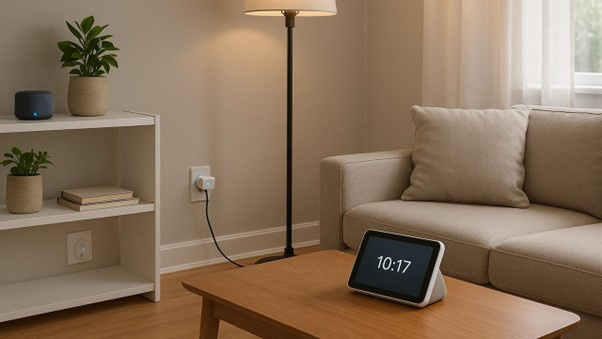
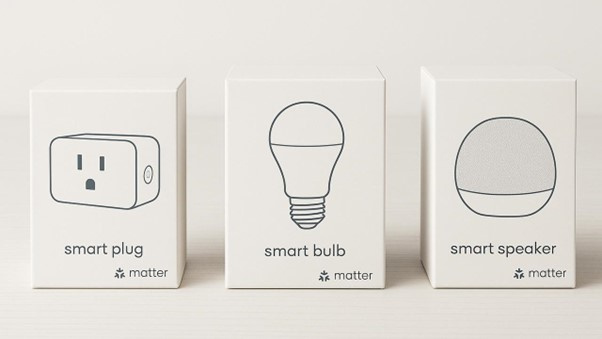
What Devices Support Matter?
Matter is still rolling out, but as of 2025, support has grown rapidly. Here are common product categories that now include Matter-compatible options:
- Smart light bulbs
- Smart plugs and switches
- Smart thermostats
- Motion sensors
- Smart locks
- Voice assistant hubs (like Amazon Echo, Google Nest Hub, Apple HomePod)
- Smart TVs (increasingly)
More categories like robot vacuums, cameras, and appliances are in development.
Look for the Matter logo on packaging, it's a triangle of three connected dots.
What Does Thread Have to Do with It?
Matter works over existing technologies like Wi-Fi, Ethernet, and Bluetooth, but it also uses something called Thread.
Thread is a low-power mesh networking protocol designed specifically for smart home devices. It allows Matter devices to talk to each other efficiently and extend coverage without relying heavily on your router.
Devices that act as “Thread Border Routers”, like the Apple TV 4K (2022+), Google Nest Hub (2nd gen), or certain Eero routers, can bridge Thread devices to your main network.
What About Older Smart Home Gear?
Some older devices will receive software updates to support Matter—but many won’t. Whether your current gear can be updated depends on its internal hardware and the manufacturer’s plans.
For example:
- Philips Hue bridges have been updated to support Matter.
- Amazon Echo devices (recent generations) are getting Matter support.
- Older smart plugs or bulbs may not be upgradeable at all.
If in doubt, check with the manufacturer or look for newly released models that are Matter-certified.
Is Matter Secure?
Yes. Matter includes built-in security features:
- End-to-end encryption for all device communication
- Local control, so commands don’t have to go through the cloud
- Device authentication during setup to ensure you’re adding genuine products
This makes Matter-based smart homes more secure than many older cloud-based systems.
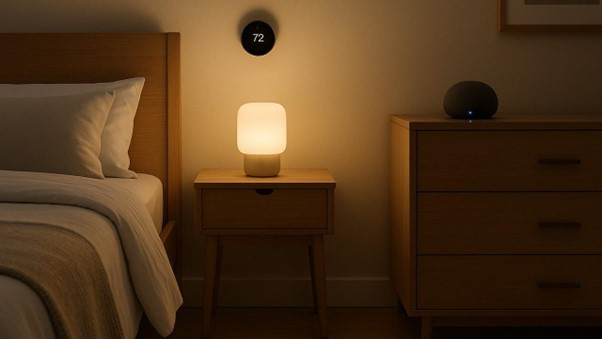
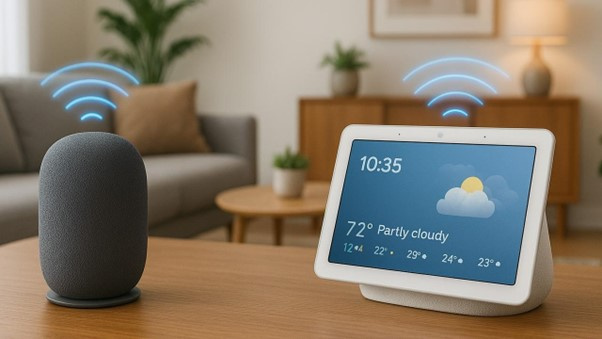
Do I Still Need a Hub?
Yes and no.
You don’t need a brand-specific hub anymore (like SmartThings or Hue Bridge for basic use). But you do need a Matter controller to manage devices and scenes. Most major devices already include one:
- iPhones/iPads running iOS 16.1+
- Google Nest Hubs and Android phones
- Amazon Echo (4th gen+)
- Samsung SmartThings Hubs
If you have one of these, you’re likely already set up to use Matter.
Should You Buy Matter-Compatible Devices?
If you’re building or upgrading a smart home in 2025, yes. Here’s why:
- It removes brand lock-in.
- It makes setup easier.
- It ensures your devices work together now and in future.
- It improves speed, reliability, and security.
Matter is still relatively new, but the industry momentum is strong. Within the next few years, it’s likely to become the default for all smart home devices.
Final Thoughts
Matter isn’t just another smart home buzzword, it’s a meaningful step forward. It aims to make smart homes more reliable, flexible, and actually user-friendly. While it’s not perfect (yet), it’s already making it easier for consumers to mix and match the devices they want without worrying about what works with what.
If you’re upgrading your home, look for the Matter logo, and know that you’re buying into a future where your smart home is finally as smart as it should be.






